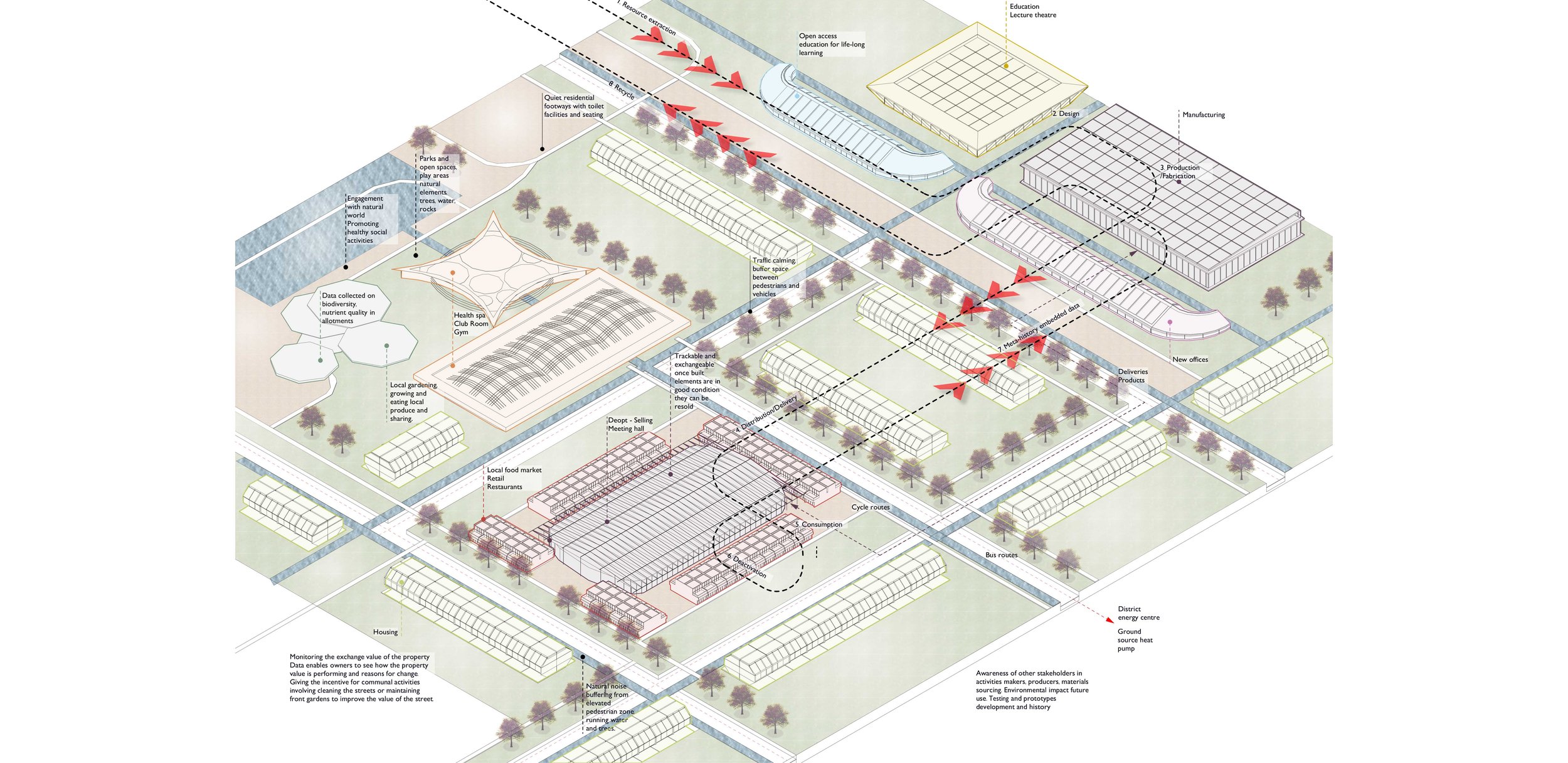innovative approach to future livinG
London, UK
In light of current policies neglecting the impact of poverty on health and well-being, our approach addresses the stark disparities in life expectancy between the wealthiest and poorest communities in England. This seven-year gap is attributed to various factors, including isolation, mental health issues, and a lack of health education. The associated healthcare costs strain the system. We propose an innovative living model that merges the "quantified self" concept with urban organization, promoting walkable links to amenities, recreational spaces, and educational facilities. Housing options, encompassing Compact living, Supported living, and Flexible lifetime homes, encourage social networking and resource sharing, fostering community engagement.
To combat financial difficulties and loneliness incubated by poverty, our solution integrates the "Toaster for Life" concept into housing. 3D printed, updatable elements follow a circular economy model, allowing individuals to affordably customize and upgrade their homes. This system not only addresses housing affordability but also acts as a means of wealth accumulation, particularly beneficial for retirees with limited pensions. RFID sensors provide data-driven recommendations for upgrades, making the housing elements adaptable to changing needs and preferences. Additionally, environmental technology focuses on reducing the CO2 footprint by encouraging locally sourced food and providing insights into the environmental impact of consumer choices. By empowering communities with data on wildlife and ecosystem health, our model aims to incentivize environmentally conscious actions and foster a culture of experimentation led by public engagement. Overall, our proposal envisions a holistic solution that addresses health, economic, and environmental challenges while promoting community-driven development.




